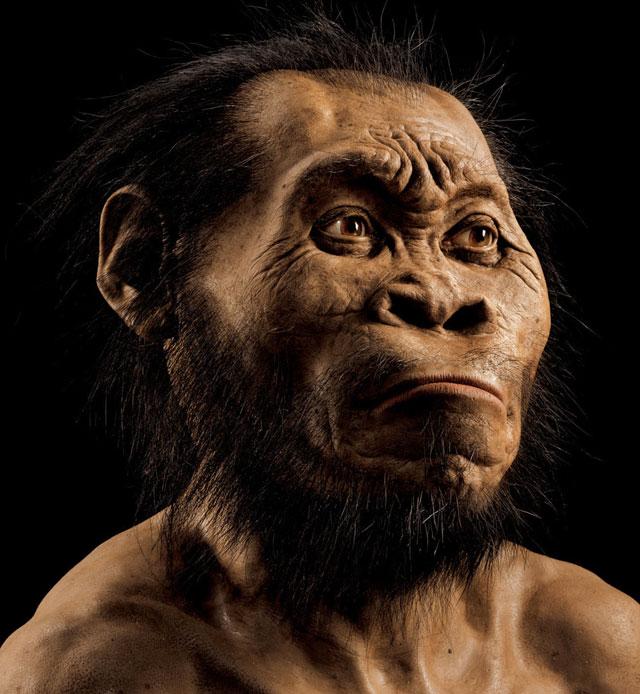jassmehra
(---: JaSs MeHrA :---)

A composite skeleton of Homo naledi surrounded by some of the hundreds of other fossil elements displayed in Magaliesburg, South Africa on Thursday. Scientists say they’ve discovered a new member of the human family tree, revealed by a huge trove of bones in a barely accessible, pitch-dark chamber of a cave in South Africa, showing a surprising mix of human-like and more primitive characteristics.
The fossilised bones of a previously unknown human species have been discovered in a cave in South Africa, scientists announced Thursday, in what is a big breakthrough in evolution research.
About 1,500 fossils were found deep in a cave system outside Johannesburg, hidden in an underground chamber only accessible through several steep climbs and rock crevasses.
The new species has been named "Homo naledi" after the "Rising Star" cave where the bones were found. Naledi means "star" in Sesotho, a local South African language.
Researchers said the discovery will change our understanding about our human ancestors.
Experts are uncertain how old the bones are, but say they were probably placed there after death -- a discovery that shines fresh light on the origin of the mankind.

This March 2015 photo provided by National Geographic from their October 2015 issue shows a reconstruction of Homo naledi's face by paleoartist John Gurche
Naledi buried their dead
"We have just met a new species of human relative that deliberately disposed of its dead," Lee Berger, research professor at the University of the Witwatersrand in Johannesburg, announced as the fossils were unveiled.
"Until this moment in history we thought the idea of ritualised behaviours directed towards the dead... was actually unique to Homo sapiens.
"We saw ourselves as different. We have now seen, we believe, a species that had that same capability -- and it is an extraordinary thing."
The bones were first discovered in 2013 by Witwatersrand University scientists and volunteer cavers in the Cradle of Humankind, a UNESCO World Heritage Site, 50 kilometres (30 miles) northwest of Johannesburg.
Ancient human remains have been found in the area since excavations begun in the 1920s.
'Tool-using capabilities'
"The discovery of so many fossils belonging to at least 15 individuals is remarkable," said Professor Chris Stringer, from the Natural History Museum in London, one of the lead analysts on the discovery.
The find highlighted "the complexity of the human family tree and the need for further research to understand the history and ultimate origins of our species," Stringer added.
Scientists say the hands, wrists and feet of the bodies were similar to modern humans, but the brain size and upper body were much more like the earliest humans.
